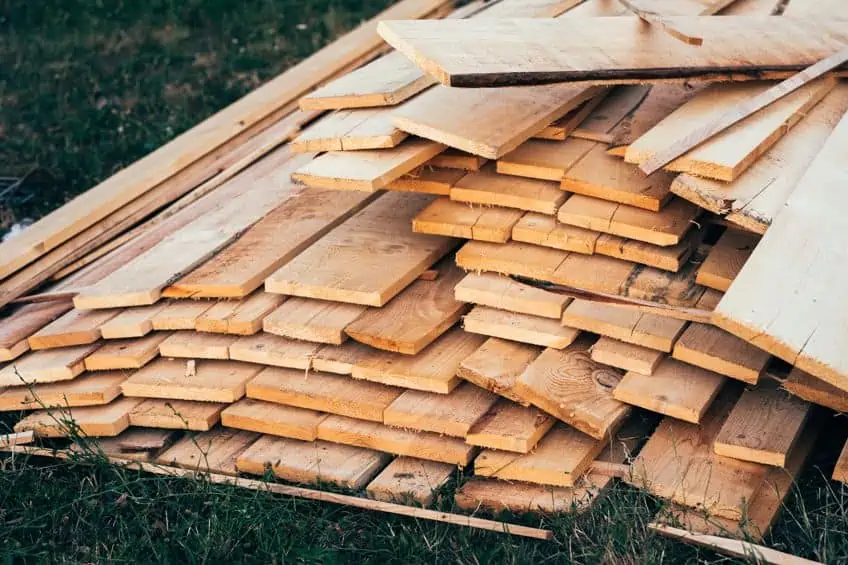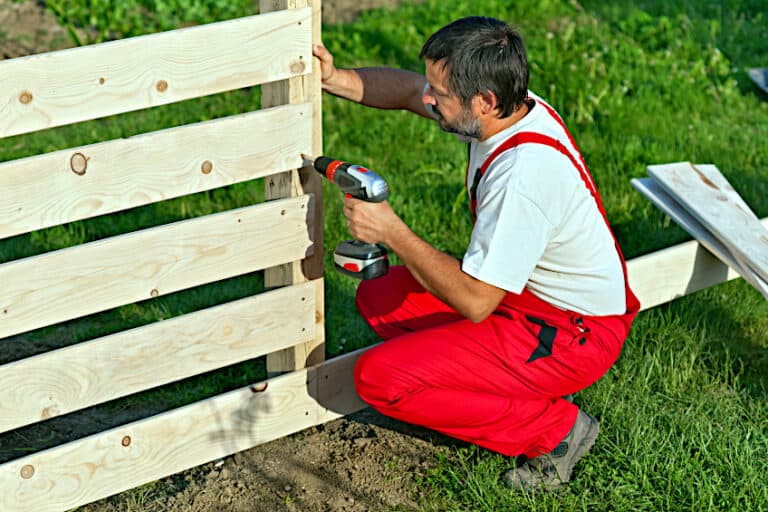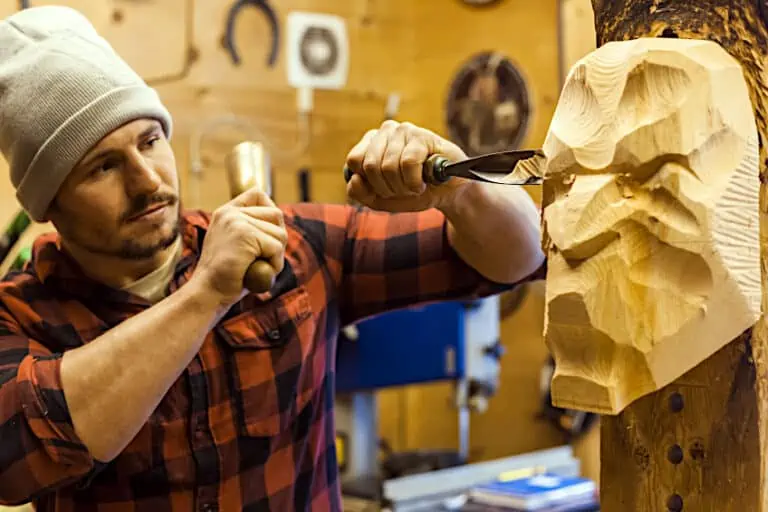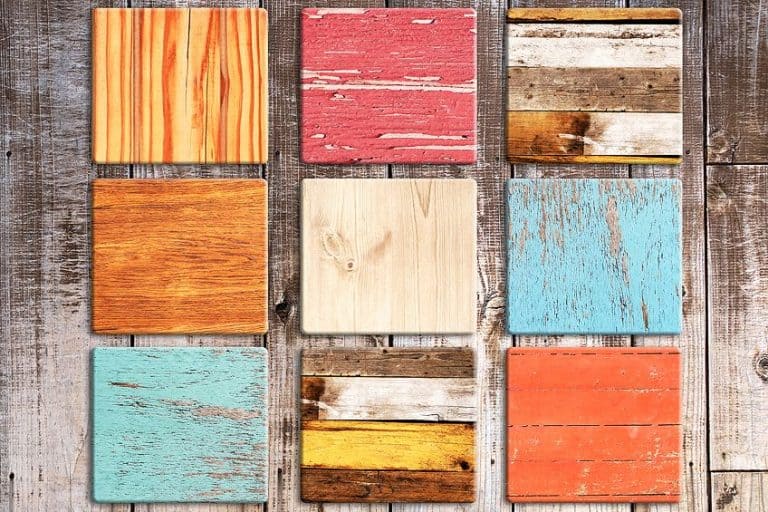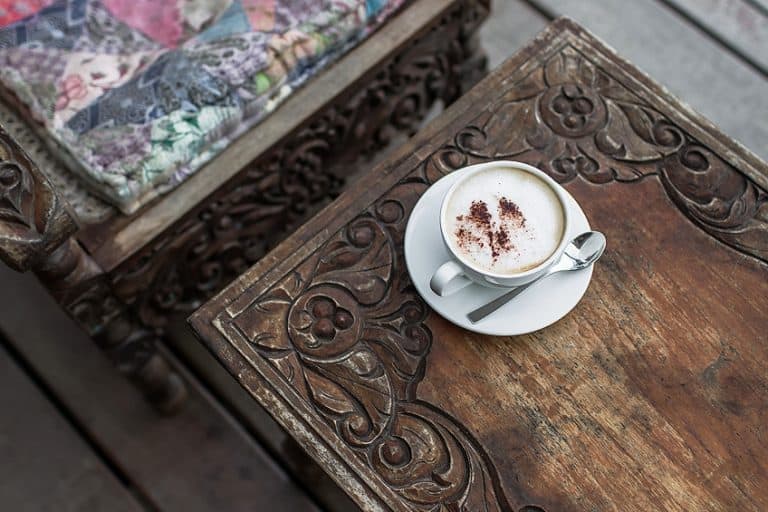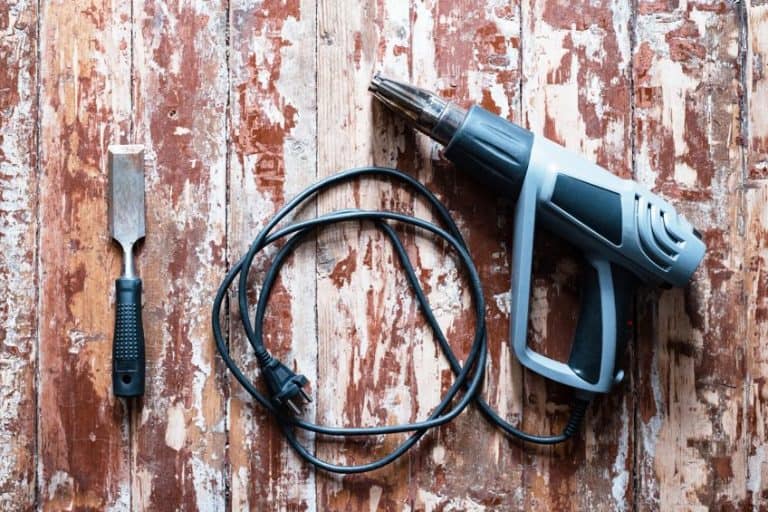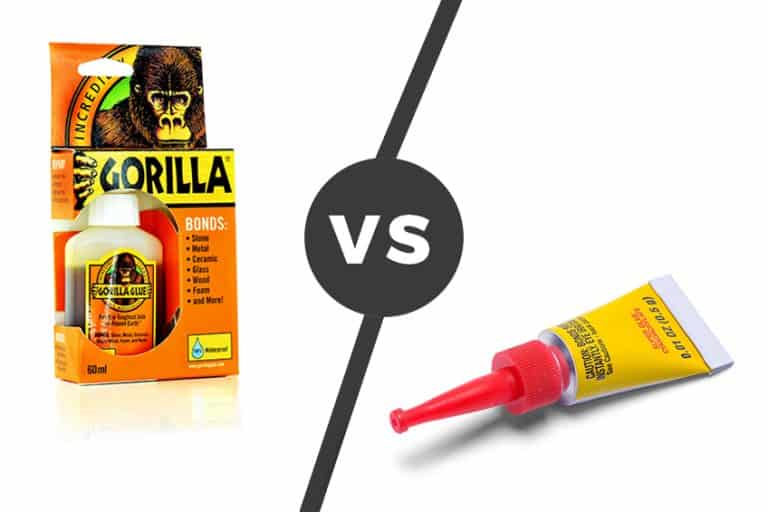How to Fix Warped Wood – The Best Methods for Unwarping Wood
Warped wood can be extremely challenging to repair especially when you don’t know what caused it to happen, but this is by no means the end of the road for your precious floorboards or favorite piece of furniture, if you don’t have a clue about how to fix warped wood, let us have a look at some of the ways to identify and fix warped wood and how to avoid running into this issue in the future.
Table of Contents
How Do You Fix Warped Wood?
There are a few techniques you can apply depending on what the situation demands, so let’s have a look at how to fix warped wood. Here you will find the main technique with an iron and water.
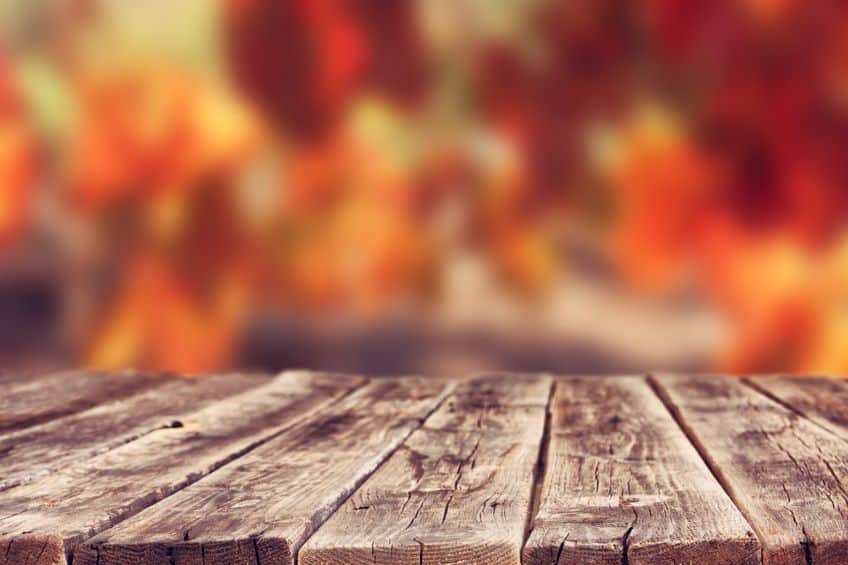
The iron method is a tried and tested way of getting nasty bubbles and kinks out of your board. The method is as effective as it is simple, all you need to get started is a towel, a small bucket of water, an iron, and of course you warped piece of wood. Once you have all of your tools, find a table you can work on that won’t be drastically affected by moisture or heat, then place your wood along with your bucket of water on the table. Submerge your towel in the water and once it is nice and wet, ring it out as best you can so that it is damp and not wet. Cover your piece of wood in the damp towel and plug in your steam iron.
Supplies you Need
- Warped wooden piece: The wood that you want to repair
- Plastic sheet or drop cloth: To protect your workspace
- Steam source: This could be a kettle, clothes steamer, or steam iron
- Towels: To dampen and cover the wood
- Clamps: To apply pressure to the warped wood
- Heavy weights: If you don’t have clamps, you can use heavy objects like books or bricks
- Sandpaper: Various grits, including coarse and finer grits
- Wood glue: If there are splits or cracks in the wood that need repairing
1. Safety First
Before you begin, ensure you’re working in a well-ventilated area. Wear safety goggles and, if needed, gloves to protect yourself from splinters and steam.
2. Identify the Warped Area:
Examine the wooden piece and locate the warped section. Determine whether it’s a convex warp (bowed outward) or a concave warp (bowed inward). This will inform your approach to fixing it.
3. Prepare Your Workspace:
Lay down a plastic sheet or drop cloth to protect your work surface.
4. Steam the Wood:
For convex warps (bowed outward), you’ll need to add moisture to the concave side. To do this, use a steam source (kettle, clothes steamer, or steam iron) to gently apply steam to the concave side of the wood. Keep the steam source at a safe distance from the wood to prevent burns or overheating. Apply the steam for several minutes, making sure the wood becomes slightly moist.
5. Apply Pressure:
Place a damp towel over the concave side and then use clamps to squeeze the wood flat. Make sure to distribute the pressure evenly along the warped area. If you don’t have clamps, you can use heavy weights like books or bricks instead. Leave the wood clamped or weighted for 24-48 hours.
6. Check the Progress:
After the waiting period, carefully remove the clamps or weights and check the wood. It should now be much flatter. If it’s not completely fixed, you can repeat the process.
7. Sand the Wood:
Once the wood is flat, use sandpaper with progressively finer grits (starting with coarse and moving to finer grits) to smooth out any rough or uneven surfaces. Sand with the grain of the wood for the best results.
8. Apply Finish (Optional):
If the wood piece requires a finish or paint, apply it according to the manufacturer’s instructions. This step is important for protecting the wood from future warping.
9. Prevent Future Warping:
To prevent future warping, store your wooden items in a stable environment with controlled humidity. Use a dehumidifier or humidifier as needed, and avoid exposing wood to extreme temperature changes or prolonged moisture.
Other Methods to Fix Warped Wood
The Sunlight Method
We would not recommend this method if unwarping your board is time-sensitive. The sunlight method is great if you don’t have iron available and is an age-old way of getting rid of kinks in wood. The towel method requires the use of some towels, a small bucket of water, a flat table resistant to water, and your warped piece of wood.
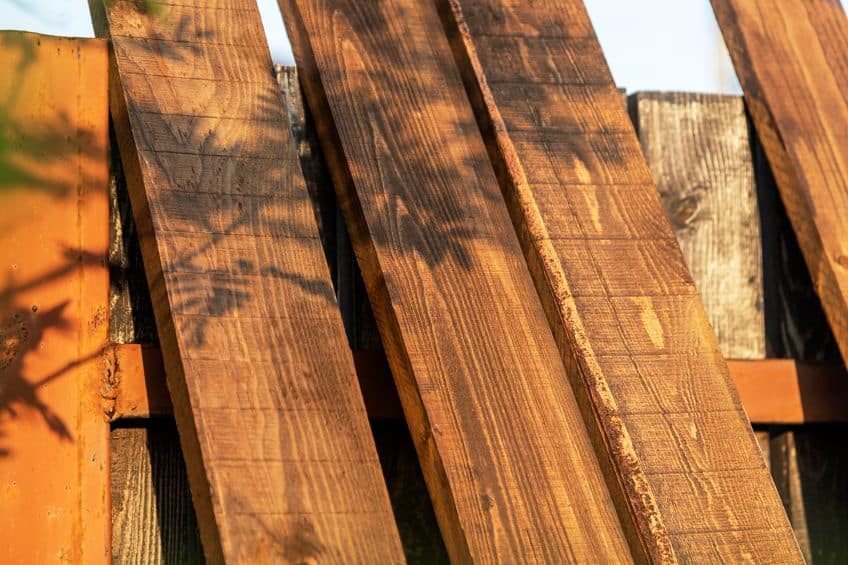
As with the previous method, submerge the towels in the bucket of water, and once they are soaked ring them out until they are damp. Wrap your piece of wood in the towels and place it with the warped bit facing the table. Place it in an area that has the most amount of sunlight for the longest period, and repeat the process over three to four days, stopping when you have achieved your desired shape.
The Heat Method
The heat method is more of an overall term for heat application. Heat is one of the easiest (and less time-consuming) ways of fixing wood that has a warping problem. Heat application can be done with sunlight, heal lamps, steam, steam irons, and even ovens. Heating the affected section or the entire piece of wood can help make the wood a bit more pliable, therefore you can either apply weight or secured your board with clamps to achieve your desired shape.
Remember working with the heat on wood can be a trick, as you don’t want to apply too much heat, you don’t want to apply too little heat, and you want the heating process to be consistent as to avoid further warpage.
The Pressure Method
Pressure is usually a force you think of once the wood has been installed, but it can also be used to correct warpage. This method is also not recommended for those of you who have to solve your warpage problems in a timely manner, as it can take several days depending on your experience and available tools. The pressure method is characterized by applying moist paper towels to the part of the wood which has been affected and then wrapping the entire board in plastic.
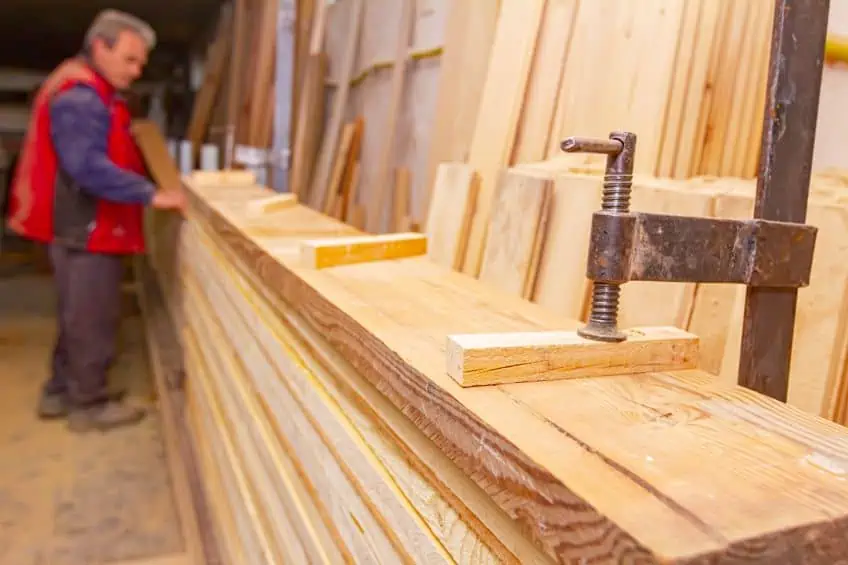
The core principle of this technique is to allow the face of the wood which has been warped to absorb the moisture from the paper towels without the opposite face being affected, hence the plastic wrap. Remove the plastic and place the board on a flat surface with the warped face facing upward. Using two C clamps, gradually secure either end of the board to the edge of the table and apply heat via a heat lamp to the affected area and the board is flush with the surface of the table. As we mentioned previously this process can take several days.
The Nylon Paper Method
We feel that the nylon paper method is probably the easiest and least time-consuming method in unwarping wood. It requires the use of nylon paper, a damp towel, and some bricks which are pretty easy to come by, but you can substitute them for something of similar weight if necessary. Simply position the wood on a flat surface with the warped surface facing upward.
Take your damp towel and wrap your wooden board in the towel, and then wrap the now covered wooden board in nylon paper.
Once the board has been wrapped in a damp towel and the nylon paper simply place your bricks or equivalently heavy object on the section of the wood which has been warped. The principle of this method relies on the pliability of wet wood and the force being exerted on it by the bricks. Since the wood is more malleable in the section which has been affected by the damp town and this moisture is insulated by the nylon paper, the weight will help flatten the board into its previously un-warped state.
Why Does Wood Warp?
Loads of people feel that wood is a living medium, that it adds character and a feeling of coziness to a setting that materials like concrete, tiling, and laminate simply don’t. If we use this metaphor as a guide and consider what conditions cause damage and “warping” to other living things, it can help us better understand what causes wood to warp and how we can prevent it from happening. Let’s have a look at some of the conditions and forces which can cause your wood to warp.
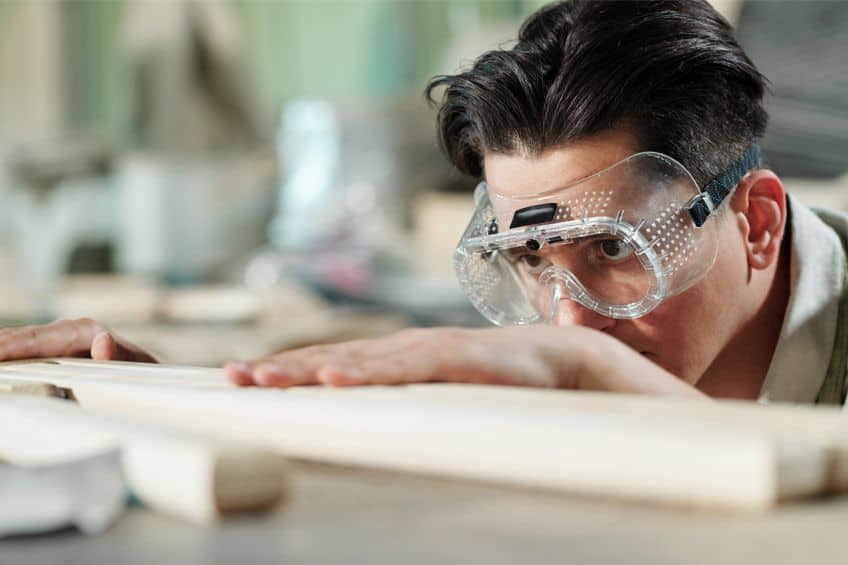
Long Term Exposure to Heat
As human beings, we have tolerance levels to various forces daily life exposes us to. The same can be said for virtually all types of wood, and like people, different types of wood have different tolerances to different forces. We have been using wood to erect shelters since the first man picked up the first stick, and as a result, we have learned that wood does not like to be exposed to concentrated heat for long periods.
Essentially what happens to most types of wood when exposed to heat for long periods is a process called thermal expansion, this reaction is common in both planks of wood and most types of metals.
Thermal expansion is common in most organic materials, as the presence of concentrated heat causes the molecules to move erratically and ultimately expands the space between them. Considering that all wood is made out of these wood molecules when these particles move further away from one another is can result in the once dense or “whole” piece of wood trying to separate from its-self. The result looks exactly as described; wood that has been raised, warped, and split.
This can result in you having to repair and/or replace the individual pieces that have been affected by heat expansion, or in server cases having to replace the entire suite of wood if the damage is excessive, however, there are ways of both preventing and repairing wood that has been affected by this sort of damage.
Prolonged Exposure to Humidity and Downpour
Water is one of the most precious resources we have at our disposal, and although it is limited and highly sort after, too much of it can be a bad thing in some instances. Similarly, to how consuming too much water can cause your belly to swell up petty quickly, wood that has been exposed to either too much water or a moderate amount of water for a prolonged period can swell up too.
Both engineered woods and naturally occurring woods have really good water protection, which is easy to understand considering that the purpose of wood fibers, when they are part of a tree, is to retain water, however, once you have repurposed these pieces of wood for construction purposes this attribute can count against you.
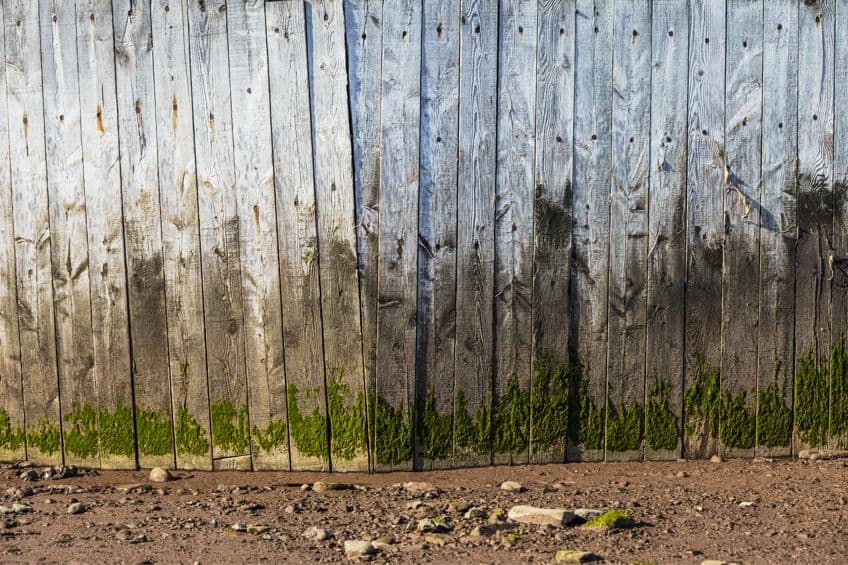
Water leaves wood extremely quickly, especially through exposed edges. This does not mean that the wood in question does not retain some of the water that has passed through/over it, although the places in the wood which has retained the said water do not dry evenly. You should keep in mind that the water has caused your piece of wood to swell up considerably, if your piece of wood increased in size uniformly, it should then dry out or decrease in size in the same manner, right? Well in a perfect world yes, unfortunately, due to some parts of the wood being more exposed to the elements than others, and some parts being denser than others, the rate at which moisture evaporates from the piece of wood is uneven.
This uneven evaporation exerts too much stress on the wood fibers, stretching and contorting them until your once perfectly functional piece of wood has been completely warped.
Does Wood Warp in Different Ways?
Yes. Wood is a multimillion-dollar industry, therefore when something goes wrong it can cost companies a lot of money. Working with raw materials can be tricky because you are often at the mercy of mother nature to provide quality material, this is not to say that there aren’t precautionary measures one can take to ensure the wood is of good quality and safe from water damage, but there are limits to this control. This being said, let us have a look at the different ways wood can warp.
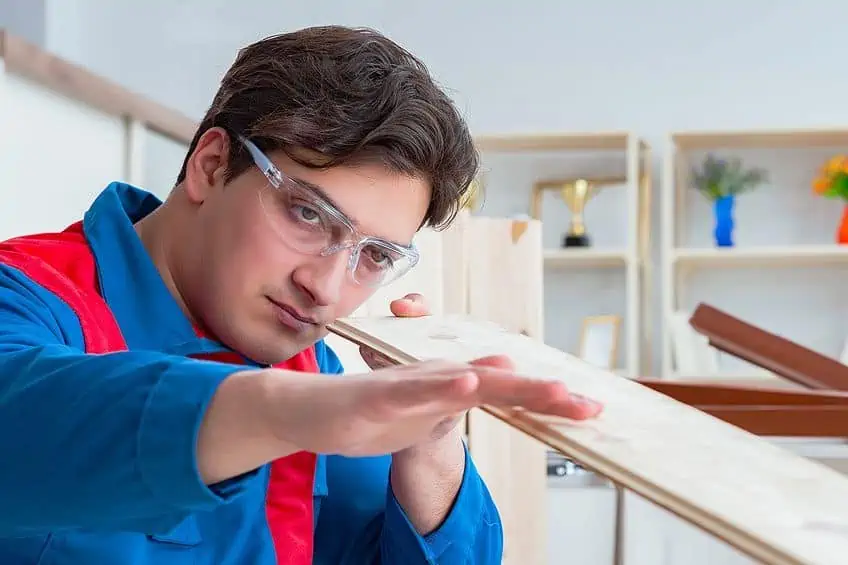
Bow Warping
Bow warping is arguably the most common type of warping. This is characterized by the face of the wood being warped inward or backward. This type of warping occurs when wood that has been fixed to a flat surface becomes warped by either prolonged exposure to heat or prolonged exposure to water. This will often leave the wood in a vaguely “c” shaped form and if nails or adhesive have been used to affix the wood, the wood will often tear away from the adhesive or tear itself through the nails.
Kink Warping
Kink warping is relatively common compared to bow warping. This can be characterized by only a particular section of a slat of wood being warped, and typically occurs when only one part of the slat in question is exposed to excessive heat and/moisture. The warping happens toward the end of the slat, making the edge (typically a fourth of the full length of wood) “kink” at a roughly 45-degree angle.
You could find this type of warping when the wood is only partially treated with water-resistant coatings, or if tension/torsion is applied to one end of the wood while exposed to excessive heat and/or moisture.
Crooked Warping
Crooked warping is the least common type of warping. It can be characterized by the entire length of the edge of the wood being carved. Essentially instead of the face of the wood bending toward or away from you if you were looking at it lying flat down, the face will curve either to the left or the right. This typically makes the wood useless for construction purposes unless it can be treated and will often result in the wood breaking any adhesive or other locking mechanisms affixing it to a surface.
Twist Warping
Twist warping is one of the weirder kinds of warping you will see and can happen to most long cuts of the wood board. This type of warping, as the name suggests, appears as though a twisting force has been applied in opposite directions on both ends of the board. This often happens when woods are stored incorrectly and dry out unevenly, therefore it is rare to find this kind of warping on board that has already been installed or affixed.
Heat treating and correcting this defect is fairly simple, but cannot be done too quickly, and the drying out process must be monitored, and the shape of the wood must be retained by clamps.
Cup Warping
This type of warping is less common than the ones we have looked at so far, particularly outside of commercial woodwork. Cup warping can be characterized as the long edges of the board curving in toward the center of the face of the slat. As the imagery suggests, this only happens with fairly wide-faced thin pieces of the board when they are not treated or stores correctly, and these edges dry quicker than the center of the board face. You could use heat treatment to resolve the warping of this manner due to the boards typically still being structurally sound, but it will take some time and patience, fortunately, it is unlikely that this type of warping will occur to a board that has already been installed.
How To Ensure Your Wood Does Not Warp
Now that you know how to fix warped wood you should also know how to prevent the wood from warping in the first place. Take our word for it, once you have spent the time and effort correcting warped wood or spent countless hours watching YouTube tutorials on how to unwarp wood of different shapes and sizes, you will be more cautious with how to care for your wood. Here are a few ways you can ensure the wood does not warp.
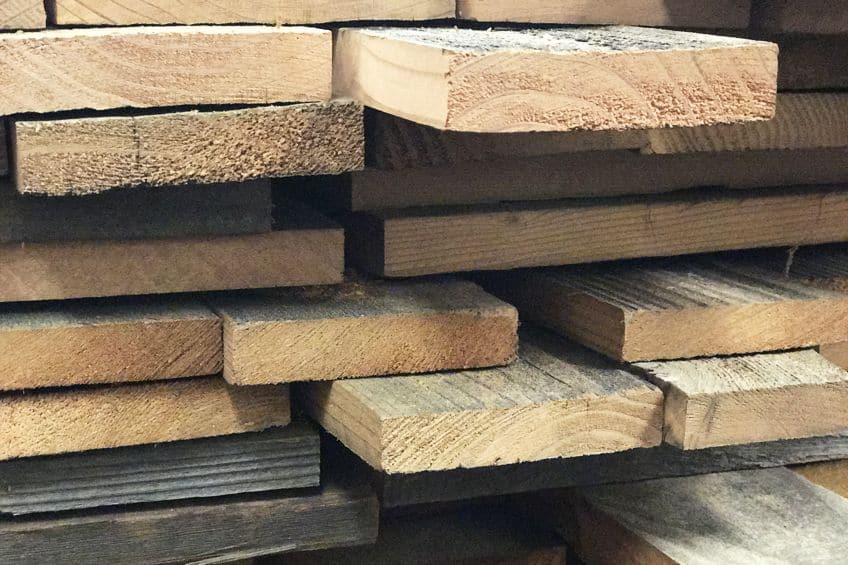
Proper Storage
Warpage in the commercial industry typically results from poor storage practices. If wood is left exposed to the elements at a job site, things like early morning dew, intense sunlight, winds, and the weight of other objects on top of the wood can cause it to warp. Sure, storing wood can be a painfully boring chore at the end of a long workday or when you have completed a personal project, but the money you will save having to buy a new board, and the time you will save unwarping wood is well worth it.
Wood likes to have the same amount of moisture as the environment around it, therefore you need to control the rate at which it reaches this equilibrium also know as EMC or equilibrium moisture content.
You can do this by placing it in a sunlight kiln, storing it elevated off the ground in a bi-directional stack with enough space in between the layers for airflow, or simply stacking it in an insulated environment on an elevated platform such as a shed or warehouse. Remember it is easier and more effective to control the environment the wood is stored in than having to figure out how to unwarp wood.
Make Your Wood Moisture Proof
This sounds a bit like something out of a science fiction movie, but there are many ways to ensure that your wood is watertight and impervious to both moisture and heat. Moisture and the force most commonly responsible for removing water, heat, are the usual suspects when warpage is found in wood. They control the expansion and contraction ratio of wood fibers, and erratic applications of these forces cause wood to warp, misshape, and even split open. Fortunately, there are few ways you can insulate your wood fibers from these forces almost completely.
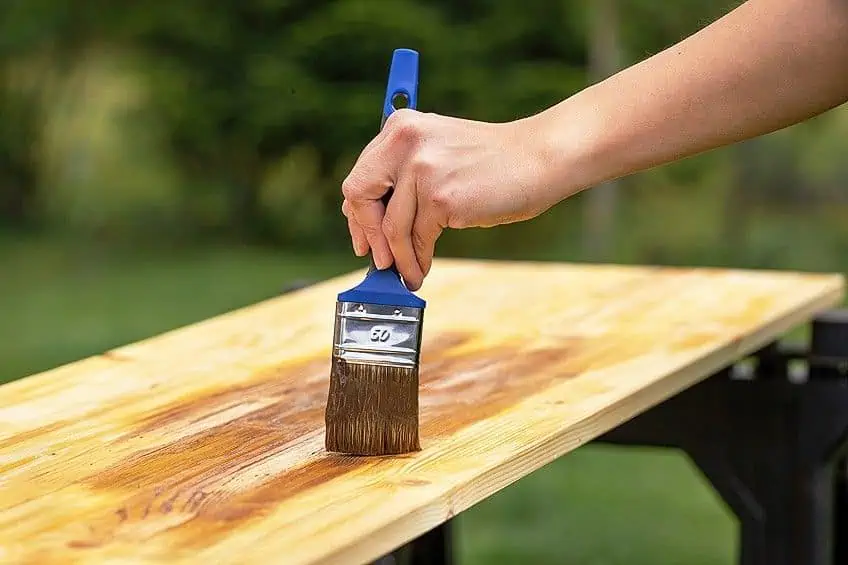
Preparing your wood and applying coatings of products like liquid latex, polyurethane varnish, deep penetrating epoxy sealant, and even oil-based paints can insulate the surface and exposed edges of your wood to prevent heat and moisture from getting inside. The products not only help protect your wood from moisture and heat, but can also improve the aesthetic appeal, impact resistance, and scratch resistance of your board. We suggest taking the time to apply one or more of these products before you affix your wood to anything.
Check Wood Thoroughly When Purchasing
Wood warping through your own negligence is understandable but purchasing some board and then having to figure out how to straighten warped wood that should have been sold to you in usable condition is a deeply frustrating experience. This being said, giving the wood you are about to purchase a good once over before you hand over your hard-earned cash should become reflexive. This can be tough especially if a salesperson is breathing down your neck saying anything and everything, they think you need to hear so they meet their quota for the day.
There are few things you can check to ensure that the cord you are buying doesn’t have any nasty surprises waiting for you when you get home.
If you are buying engineered wood you can have a look at the edges where the veneer is exposed and check for any gaps or recesses between the layers, and if you are buying solid wood you can compare it to the pieces around it, or anything objectively straight for a good reference point. One of the simplest ways to check if the wood is warped is simply to line your eyes up with the edge of the board and look straight down the face, if it deviates in any way this could be an indication that the wood is warped. You can also check wood for moisture, as wet or damp wood will be heavier compared to dry wood.
Do Not Over-Dry Your Wood
The need to straighten wood commonly stems from water evaporating too quickly and too slowly in a different part of the board. This being said, over-drying wood can also cause wood to warp so maintaining a good balance in humidity is critical. Over drying can cause wood to become brittle and warp in some instances because there is too little moisture in the wood fibers, and although this can make good kindling for a fire (maybe this is what you want), but for construction purposes, it is objectively not ideal.
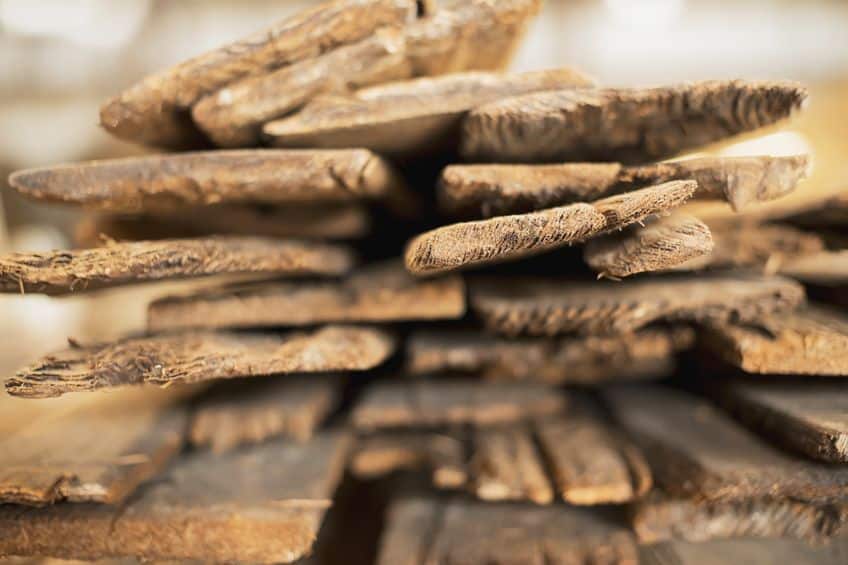
Having to straighten warped wood that has been come brittle and dry is a labor-intensive and time-consuming process, therefore monitoring your wood’s progress through the drying process should be a top priority. If you would like to take this monitoring process to the next level you can invest in a humidity meter specially designed to monitor the ambient temperature in closed spaces, or if you have deep pockets you could invest in a wood moisture meter which will provide you with a fairly accurate reading of exactly how much moisture is currently in your wood’s fibers.
Tips And Tricks For Fixing Warped Wood
As effective as the techniques we have mentioned previously are, there are a few tips and tricks which can help you when you are fixing warped wood. Remember that these processes can be frustrating if the matter is time-sensitive, so here are a few pro tips for you when you have to deal with warped wood.
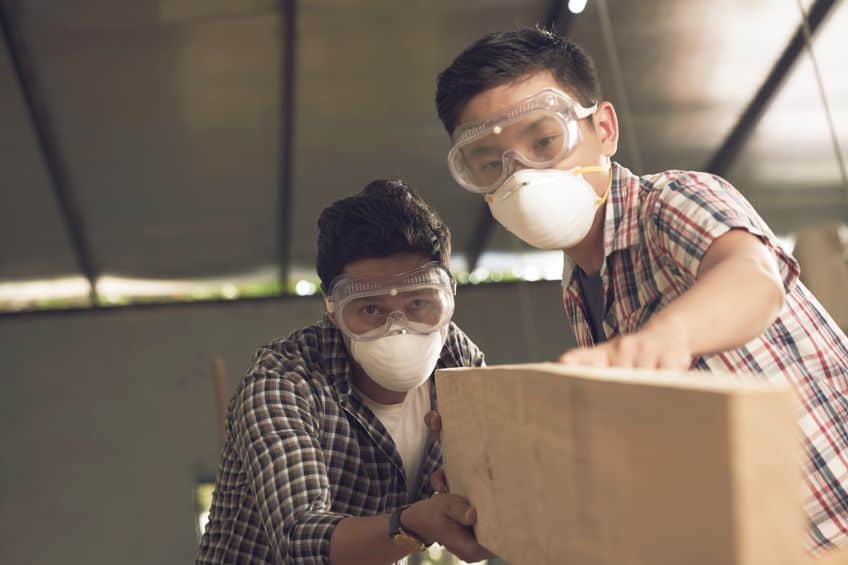
Be Patient
They say patience is a virtue, but when you don’t have the time or the luxury to caress the wood back to its former glory you can get frustrated and try to rush the process along. This is probably the worst thing you could do because in the best-case scenario you might end up having to start the process all over again, and in the worst-case scenario you could end up cracking or splitting your board to a point where it is irreparable.
You should hold this tip in the front of your mind especially when you are working with techniques that require pressure to be applied to your board and bending wood that has not been sufficiently softened can lead to it slitting down the middle, or even worse, on both ends.
Understand the Warping You Are Repairing
This tip is especially important when you are working with large pieces of wood. As we covered previously there are different types of warping and they all have methods that are most conducive to repairing them. A common mistake when figuring out how to unwrap a wood tabletop for example is how whether it needs to be removed or not.
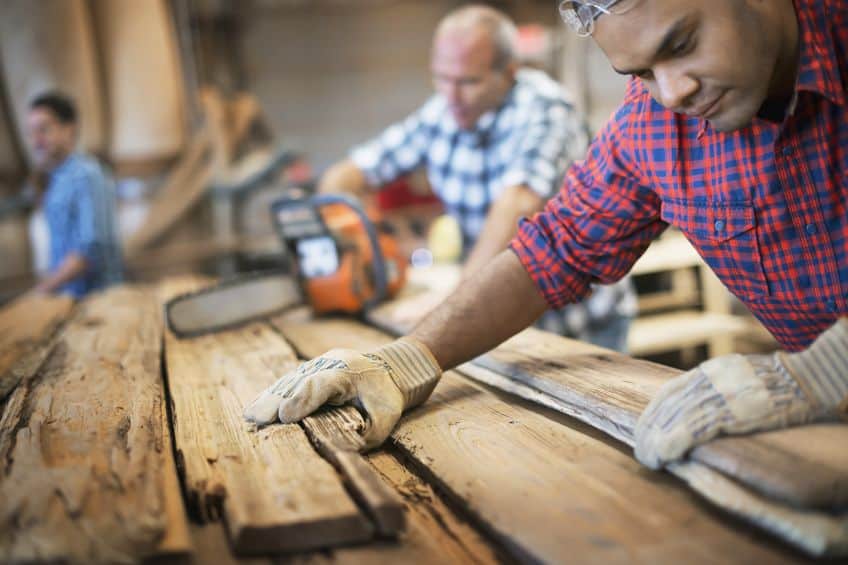
If the warpage is severe and the table has been twisted, you might need to remove the tabletop, however, if there is only minor bow warping you can simply use a damp towel and a steam iron to unwarp the wood. This being said, something as seemingly benign as how to unwarp a wood tabletop requires a fair amount of knowledge, forethought, and preparation.
Prepare Beforehand
Preparing your workspace beforehand is extremely important. As we are sure you have noticed by now, water plays a huge part in straightening out warped wood, therefore the rate of absorption and the rate of evaporation should be considered. This is especially important when you are using heat or pressure or a combination of the two to straighten warped wood, as the last thing you want I for your wood to reach peak pliability and you are running around trying to find your heat lamp and C-clamps.
This should be quite clear considering that there are so many sources detailing how to straighten wood with water, but we are all human and it is easy to get caught up in the moment, so before you fill your bucket ensure you have prepared for the following steps in the process.
Now that you know the different ways in which wood can warp, how to prevent your wood from warping, how to identify warped wood, how to prevent your wood from warping, and even how to straighten wood with water, heat, and pressure you are ready to go out there and try it for yourself. Remember to know what type of warpage you are dealing with, be patient, prepare well, and always put your safety first!
How to fix warped wood
Materials
- Plastic sheet or drop cloth
- Towels To dampen and cover the wood
- Clamps To apply pressure to the warped wood
- Kettle, clothes steamer, or steam iron
- Sandpaper Various grits, including coarse and finer grits
- Wood glue If there are splits or cracks in the wood that need repairing
Instructions
- Before you begin, ensure you're working in a well-ventilated area. Wear safety goggles and, if needed, gloves to protect yourself from splinters and steam.
- Examine the wooden piece and locate the warped section. Determine whether it's a convex warp (bowed outward) or a concave warp (bowed inward). This will inform your approach to fixing it.
- Lay down a plastic sheet or drop cloth to protect your work surface.
- For convex warps (bowed outward), you'll need to add moisture to the concave side. To do this, use a steam source (kettle, clothes steamer, or steam iron) to gently apply steam to the concave side of the wood. Keep the steam source at a safe distance from the wood to prevent burns or overheating. Apply the steam for several minutes, making sure the wood becomes slightly moist.
- Place a damp towel over the concave side and then use clamps to squeeze the wood flat. Make sure to distribute the pressure evenly along the warped area. If you don't have clamps, you can use heavy weights like books or bricks instead. Leave the wood clamped or weighted for 24-48 hours.
- After the waiting period, carefully remove the clamps or weights and check the wood. It should now be much flatter. If it's not completely fixed, you can repeat the process.
- Once the wood is flat, use sandpaper with progressively finer grits (starting with coarse and moving to finer grits) to smooth out any rough or uneven surfaces. Sand with the grain of the wood for the best results.
- If the wood piece requires a finish or paint, apply it according to the manufacturer's instructions. This step is important for protecting the wood from future warping.
- To prevent future warping, store your wooden items in a stable environment with controlled humidity. Use a dehumidifier or humidifier as needed, and avoid exposing wood to extreme temperature changes or prolonged moisture.
- If the wood has split or cracked due to warping, you may need to apply wood glue to mend the damaged areas before sanding and finishing.
Frequently Asked Questions
Can Warped Wood Floors Be Fixed?
If you have ever encountered this, you know the pain how much of an eyesore it can be. If you have wooden floorboards and the warping is not too server there is a good chance they can be repaired. This is most true when dealing with a single board, as you can have the options of simply removing the moisture and reshaping it, sanding down the edges, or simply replacing the board with one that has a matching finish.
What Causes A Warped Door?
Well just because wood is in a different shape does not mean that it is immune to the forces that affect un-crafted wood. This being said, a door will warp due to the uneven evaporation of water in the wood fibers. There are many methods you can employ to correct the warping of a wooden door, but unfortunately, you will have to remove it from its hinges to do so.
What Wood Is Least Likely to Warp?
According to the US department of agriculture, the wood that is the least likely to warp is Redwood. The molecular structure of redwood is far more “rigid” in comparison to other woods and therefore is less likely to warp due to external forces. This makes Redwood great for construction as it is light in weight and its rigidity makes it ideal for load-bearing purposes.

I have been into woodworking since 2005 and woodturning since 2011. Because of my love for wood and woodworking, I started woodhappen.com to teach other enthusiasts about how to finish and seal wood, the best woodworking tools, the different types of wood, and everything else related to woodworking! Read more about me here.

